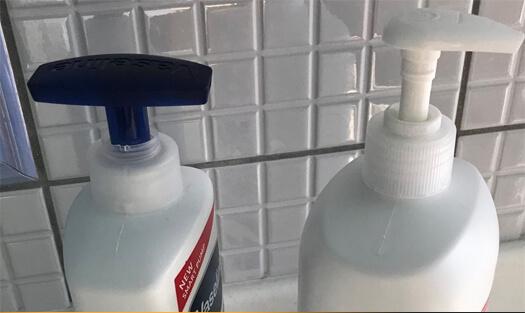
One of my all-time favorite Bob Dylan quotes applies to this story because I’m talking about pumps and why they are not working or, better said, why their design isn’t.
So, look at these 2 lotion bottles. The one on the left is advertised as having a “smart pump” and I purchased it to replace the one on the right – without the ordinary pump, not the smart one. Can you see the fault in the smart pump’s design yet? I couldn’t when I bought it. I realized what the issue was once when I attempted to use it.
I went to push the pump and the lotion shot out the other direction – all over the floor! It was at this point that I realized the “smart pump” wasn’t exactly so smart.
I’ve started to think more about this issue because I was reading Don Norman’s The Design of Everyday Things at the time. When this little incident happened, I understood immediately this is exactly what he meant by “Designers need to focus their attention on the cases where things go wrong, not just on when things work as planned.”
The book talks about how we need to figure out how to use the product first – that makes sense. This is discovery. We can discover how a product works if the designer applied these psychological concepts correctly: affordances, signifiers, constraints, mappings and feedback. Firstly, we need to be able to see what actions are possible (discoverability) and yes, the lotion bottle clearly shows that you can push the top to get the lotion out.
The pump is the affordance – you can see it is elevated and because you’ve used a pump before you know if you push down, it will allow you to get the lotion out. The signifier tells you how. Can you see the problem now? There is no signifier telling me which end of the spout the lotion comes out – both ends are designed the same shape! Crazy, huh? The original, “ordinary” pump clearly has the correct signifier. The shape of the spout narrows where the lotion comes out – genius!
So why spend the effort and cost on a “smart pump” at all when the old one worked perfectly well? I think what they were trying to do is make it easier to lock the pump, so that lotion wouldn’t be dispensed inadvertently. OK, I get it. Now, I can turn the pump top and then it’s locked. I don’t have to push the pump top down and twist to lock which results in lotion coming out that I don’t necessarily want.
So, while fixing one problem, they created another. I can’t help thinking that somewhere in the design process either consumer tests didn’t happen, or they failed to uncover the loss of this important signifier. Unilever, who owns Vaseline, any comment? Just curious.
At Dashboard Vision, we are talking to our users in all the product development stages, in order to avoid situations like this.
Hope you have enjoyed reading this and have learned something about affordances and signifiers. I whole-heartedly recommend Don Norman’s book.
Anyone else have a funny design story to tell? Please share.
Follow Marya Kaska on LinkedIn.


